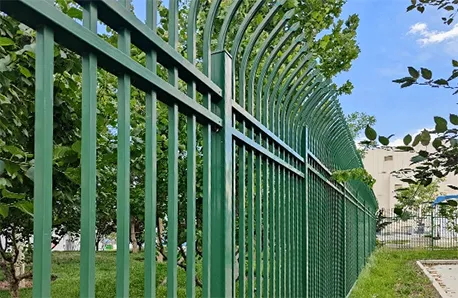Exploring the Applications and Benefits of Steel Mesh in Construction and Engineering
Nov . 10, 2024 00:48
Understanding Steel Mesh Its Applications and Advantages
Steel mesh, also known as welded wire mesh or wire fabric, is an essential material in various construction and industrial applications. Made by intersecting steel wires in a grid pattern, steel mesh is recognized for its strength, stability, and versatility. This article explores the different types of steel mesh, its applications, and the advantages it offers in construction and other fields.
Types of Steel Mesh
There are several types of steel mesh, each designed for specific purposes. The most common types include
1. Welded Wire Mesh This is created by welding intersecting wires at every junction. It is often used for reinforcement in concrete structures, providing strength and stability.
2. Chain Link Fencing Made from woven steel wires, this type of mesh is typically used for fencing applications, providing security while allowing visibility.
3. Expanded Metal Mesh Created by cutting and expanding a flat sheet of metal, this type offers a unique pattern that allows airflow and light while providing strength and support.
4. Composite Steel Mesh This type combines steel with other materials, such as fiberglass, to create a mesh that offers specific benefits like corrosion resistance.
Applications of Steel Mesh
Steel mesh is utilized in various sectors due to its strength and durability. Some notable applications include
1. Construction In the construction industry, steel mesh reinforces concrete slabs, walls, and pavements, ensuring that structures can withstand heavy loads and pressures. It is commonly used in residential, commercial, and infrastructure projects.
2. Industrial Flooring Steel mesh is often used in industrial settings for flooring applications. It provides a sturdy surface that can support heavy machinery and equipment.
3. Fencing and Barriers Steel mesh fencing is widely used in security applications, providing an effective barrier for construction sites, residential areas, and commercial properties.
steel mesh

4. Agriculture In agriculture, steel mesh can be used for building structures like greenhouses, livestock enclosures, and fencing, making it easier to manage farm animals and crops.
5. Mining Steel mesh is essential in the mining industry for reinforcing tunnels and preventing collapse, ensuring the safety of workers in this hazardous environment.
Advantages of Steel Mesh
The use of steel mesh offers several advantages, making it a preferred choice in numerous applications
1. Strength and Durability Steel is renowned for its high tensile strength, allowing steel mesh to endure heavy loads and resist wear and tear over time.
2. Cost-Effective Compared to other reinforcement methods, steel mesh is relatively inexpensive, providing efficient use of materials in construction without compromising quality.
3. Versatility Steel mesh can be customized in terms of size, shape, and thickness, allowing for a wide range of applications across different industries.
4. Ease of Installation Steel mesh is easy to handle and install, significantly reducing labor costs and construction time.
5. Enhanced Safety The use of steel mesh in construction increases overall safety by providing structural support and integrity, reducing the risk of failure.
6. Corrosion Resistance With proper coatings and treatment, steel mesh can be made resistant to corrosion, extending its lifespan and reducing maintenance costs.
Conclusion
Steel mesh is a vital component in modern construction and industrial applications, offering unparalleled strength, versatility, and cost-effectiveness. From reinforcing concrete structures to providing security fencing and enhancing architectural designs, steel mesh plays a crucial role in various sectors. Its numerous advantages make it an ideal solution for builders, environmental managers, and architects alike. As industries continue to evolve, the demand for innovative and reliable materials like steel mesh will certainly persist, reinforcing its importance in the fabric of modern infrastructure.









 Unity
Unity Creation
Creation Challenge
Challenge Contribution
Contribution










